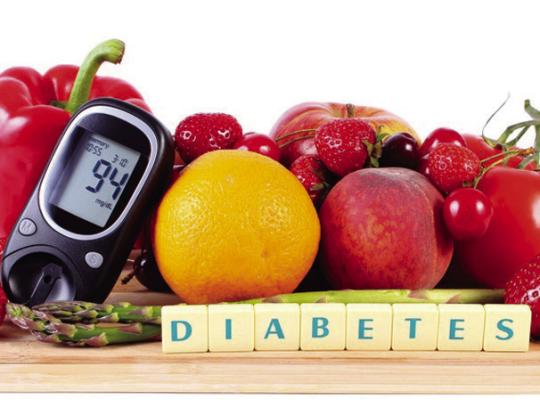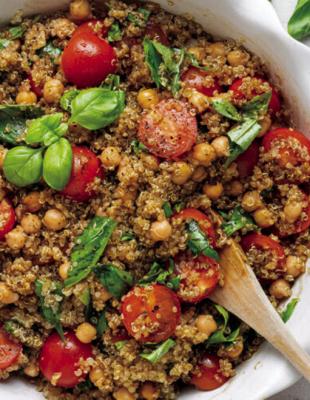Eating For Diabetes
Dairy often gets a bad rap. Some think it causes bloating or gas. Others think it’s inflammatory. The truth is dairy can be part of a healthy diet. The Dietary Guidelines recommend three servings of dairy a day.
But now Italian researchers have discovered that eating certain animal products -- including dairy -- could reduce the risk of developing Type 2 diabetes.
Researchers, led by Dr. Annalisa Giosue of the Department of Clinical Medicine and Surgery at the University of Naples Federico II in Naples, Italy, reviewed existing meta-analyses into the links between animal products and diabetes. The scientists browsed four databases -- Web of Science, PubMed, Scopus and Embase -- to uncover suitable studies that compare how different animal products could lead to or prevent the development of Type 2 diabetes.
The team found 175 studies of animal products and Type 2 diabetes. Their findings were presented at the recent annual meeting of the European Association for the Study of Diabetes in Stockholm, Sweden.
Researchers found that drinking 7 ounces of milk per day was associated with a 10% reduction in diabetes risk and 7 ounces of total dairy was associated with a 5% reduction. Low-fat dairy was associated with a 3% reduction. Eating 7 ounces of yogurt was associated with a 6% reduction. Eating 1 ounce of cheese and 7 ounces of full-fat dairy had no effect on the risk of Type 2 diabetes.
The researchers found a 30% increase in risk with the consumption of 7 ounces of processed meat per day and a 22% increase in risk with the consumption of 7 ounces of red meat per day. Eating white meat of chicken was associated with a 4% increase in risk (per 3.5 ounces daily consumption) while eating fish and eggs had no effect on developing Type 2 diabetes.
Here’s the bottom line: All foods can fit into a healthy eating plan -- dairy included and even small amounts of processed and red meats. Eating healthy to prevent the risk of Type 2 diabetes is just one of many things you can take control of, along with exercise, reducing stress and maintaining good sleep habits.
Q and A Q: Does coffee really have antioxidants?
A: Coffee actually may be one of the main sources of compounds with antioxidant activity for many people, as much if not more than fruits and vegetables, according to a study published in the October 2014 issue of Journal of Nutritional Science. Coffee is higher in these compounds than green tea. In fact, upwards of 1,000 compounds with antioxidant activity have been identified in unprocessed coffee beans, and even more develop during roasting.
RECIPE I’m a big fan of quinoa, but for many, just pronouncing it correctly (keen-wah) can be challenging, let alone including it in our meals. It’s one of the few grains that is a complete protein (meaning it has all the amino acids we need). Like rice, quinoa needs to have flavor to please our palates because otherwise, it can be rather bland. Here’s a recipe for basil quinoa salad that accomplishes that. It’s from “Eat to Beat Diabetes.”
BASIL QUINOA SALAD Servings: 6 1 cup fresh basil 2 tablespoons grated Parmesan cheese 2 tablespoons lemon juice 2 tablespoons olive oil 4 cloves garlic, minced 1/4 teaspoon salt 1/4 teaspoon black pepper 2 cups cooked quinoa 1 (15-ounce) can no-saltadded red kidney beans, rinsed and drained or 1 3/4 cups cooked red kidney beans 1 cup chopped yellow sweet pepper (1 large) 1/2 cup chopped, seeded tomato (1 medium) 1/2 cup sliced green onions (4) 4 cups baby spinach or arugula Place basil in a food processor. Add Parmesan cheese, lemon juice, olive oil, garlic, salt and black pepper. Cover and process until nearly smooth, stopping to scrape down sides of processor as needed. Set aside. In a medium bowl, stir together cooked quinoa beans, sweet pepper, tomato and green onions. Add basil mixture and stir to coat. Serve quinoa mixture over baby spinach. Serves 6 (3/4 cup quinoa mixture and 2/3 cup spinach each).
Note: To make 2 cups cooked quinoa, in a fine strainer rinse 1/2 cup quinoa under cold running water; drain. In a small saucepan, combine 1 1/4 cups water, the quinoa and 1/4 teaspoon salt. Bring to boiling. Let stand to cool slightly. Drain off any excess liquid.
Per serving: 177 calories; 8 grams protein; 24 grams carbohydrates; 6 grams total fat; 1 milligrams cholesterol; 8 grams fiber; 1 gram sugars; 235 milligrams sodium.
Charlyn Fargo is a registered dietitian with SIU Med School in Springfield, Illinois. For comments or questions, contact her at charfarg@aol. com or follow her on Twitter @NutritionRD. To find out more about Charlyn Fargo and read features by other Creators writers and cartoonists, visit the Creators website at www.creators.com.


